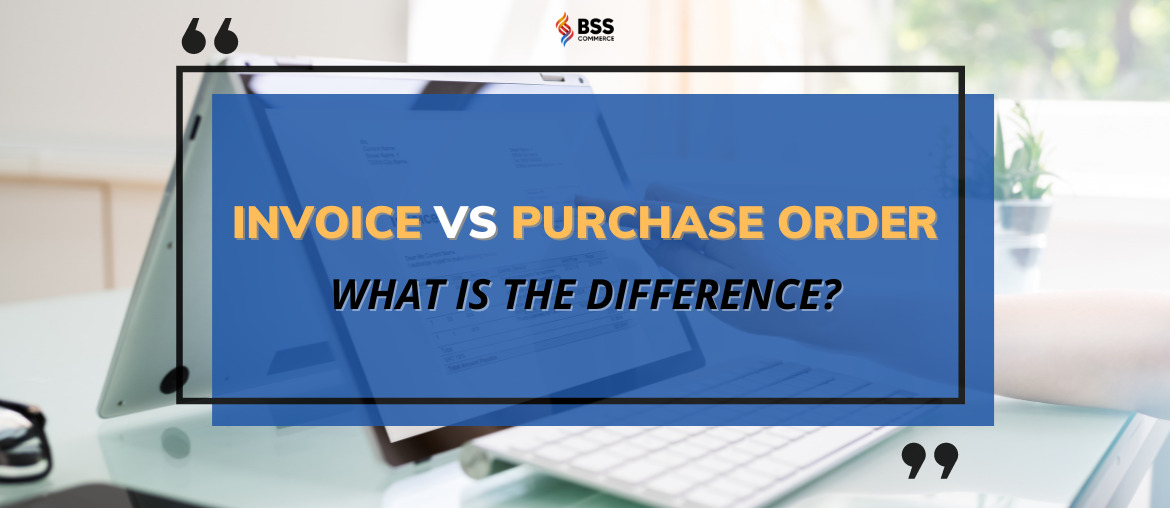Efficient business operations hinge upon a meticulously organized system that guarantees seamless procurement processes and punctual payments. In this context, two pivotal elements take center stage: purchase orders and invoices. The concepts of ‘purchase order number’ and ‘invoice number’ frequently arise in the realm of business transactions, occasionally leading to confusion due to their apparent similarities.
In the following article, we embark on a journey to unravel the nuances between these seemingly interchangeable terms. We illuminate their distinct roles within the business landscape,
shedding light on the importance of understanding the contrasting nature of invoice vs purchase order.
What is a Purchase Order?
Table of Contents
A purchase order (PO) is a formal document issued by a buyer to a supplier, outlining the specific products or services the buyer intends to purchase. It serves as a legally binding agreement between the two parties, detailing the terms and conditions of the transaction. A purchase order provides essential information to both the buyer and the supplier, ensuring clear communication and proper execution of the order.

Key Components of a Purchase Order
Key components within a purchase order include the unique purchase order number, a reference point that aids tracking and simplifies communication with the supplier.
Additionally, the date of issuance sets the order’s timeline and expectations. Billing and shipping details, along with contact information, facilitate seamless correspondence.
The list of items ordered, complete with descriptions, quantities, and unit prices, forms the heart of the purchase order. This specificity minimizes errors during order fulfillment. The agreed delivery date further solidifies expectations.
Terms and conditions address intricacies and create a framework for the transaction. Lastly, the total amount consolidates costs, including item prices, taxes, and other charges, providing a clear financial snapshot.
When to Use a Purchase Order
Using a purchase order is beneficial in several scenarios, including:
- Large or Complex Orders: For significant purchases involving multiple items or services, a purchase order helps ensure accuracy and completeness.
- Contractual Agreements: When working under specific terms, such as long-term contracts or agreements, purchase orders provide a formal record of obligations.
- Budget Control: Organizations often require purchase orders to control expenses and monitor budget allocations.
- Legal Protection: Purchase orders establish a legal transaction record, offering protection in case of disputes or discrepancies.
- Supplier Communication: A purchase order is a clear communication tool that conveys precise requirements to suppliers.
- Internal Approval: In larger companies, purchase orders often require internal approval before issuing, promoting accountability.
- Inventory Management: Purchase orders aid in managing inventory levels, ensuring that goods are ordered only when needed.
- Cross-Referencing: Purchase orders can be used to cross-reference invoices and receipts, ensuring accurate billing.
In essence, a purchase order streamlines the purchasing process by creating a standardized framework that safeguards both buyers and suppliers against misunderstandings and complications. By providing a detailed overview of the transaction, a purchase order contributes to more efficient procurement operations.
What is an Invoice?
An invoice is a formal document sent by a seller to a buyer, requesting payment for goods or services provided. It serves as a billing statement that outlines the details of the transaction, including the items sold, their quantities, prices, and any applicable taxes or fees. Invoices are an integral part of the business-to-business (B2B) and business-to-customer (B2C) transaction processes, facilitating the financial aspect of commerce.

Key Components of an Invoice
In the world of business transactions, the invoice takes center stage, coordinating the financial interactions between buyers and sellers. Its essential components interlace to facilitate smooth payments and precise record-keeping.
The invoice number, a distinctive identifier, starts this process, aligning tracking and referencing for effective communication. The invoice date complements this by establishing payment schedules and mutual obligations.
Billing, shipping details, and the seller’s contact form a trio of accuracy, ensuring error-free billing and seamless delivery. The items sold section provides meticulous specifics, harmonizing descriptions, quantities, and prices for clear understanding. In terms of finances, the total amount orchestrates the ensemble, encapsulating costs, taxes, and fees for a comprehensive view.
The payment due date emphasizes the urgency for prompt payment while synchronizing expectations. Payment instructions guide seamless transactions, leading buyers toward remittance. Lastly, terms and conditions act as the song’s lyrics, harmonizing payment processes, including terms, discounts, and return policies.
Purpose of an Invoice
Invoices serve several crucial purposes in business transactions:
- Payment Request: The primary purpose of an invoice is to request payment from the buyer for goods delivered or services rendered.
- Legal Record: An invoice acts as a legally recognized record of the transaction, detailing the terms agreed upon by both parties.
- Proof of Transaction: Invoices provide proof that a business transaction has taken place, offering documentation for accounting and tax purposes.
- Bookkeeping: Invoices assist businesses in tracking their financial transactions, managing cash flow, and maintaining accurate records.
- Communication: Invoices communicate the exact items provided, quantities, and associated costs, ensuring transparency and accuracy.
- Audit Trail: Invoices create an audit trail that allows businesses to trace the flow of products, services, and payments.
- Account Reconciliation: Invoices help buyers and sellers reconcile their accounts, ensuring that payments match the products or services received.
In summary, invoices are a vital tool for businesses to ensure timely and accurate payment for their products and services. They provide clarity, transparency, and a formal structure to financial transactions, fostering trust and efficient business operations.
>>> Discover an useful plugin help to speeds up Magento payment process by generating invoice and shipment automatically: Magento 2 Auto Invoice & Shipment
What’s The Difference Between Purchase Order And Invoice (Invoice vs Purchase order)
Invoice vs Purchase order are distinct elements within the business transaction process, each serving unique purposes that contribute to the seamless flow of commerce. Understanding their differences is crucial for efficient operations and clear communication.
| Aspect | Purchase Order Number | Invoice Number |
| Purpose and Function | Identifier for the buyer’s order | Identifier for the seller’s billing statement |
| Timing of Generation | Generated at order initiation | Created after goods/services delivery |
| Direction of Communication | Buyer to seller | Seller to buyer |
| Usage in Transactions | Tracks order status and fulfillment | Facilitates payment processing |
| Precedence and Dependencies | Precedes invoice number | Generated after purchase order |
| Internal vs. External Focus | Primarily internal, shared with supplier | Shared externally for payment and records |
| Tracking and Accountability | Tracks orders, assists in inventory management | Tracks payments, aids financial records |
This table provides a concise overview of the primary differences between invoice vs purchase order, highlighting their distinct roles and contributions within business transactions.
Best Practices for Managing Purchase Orders and Invoice Numbers
Effectively managing purchase orders and invoice numbers is crucial for maintaining organized business operations and accurate financial records. Implementing best practices ensures that transactions are streamlined, errors are minimized, and communication remains clear. Here are key practices for managing purchase orders and invoice numbers:
-
Standardize Numbering System:
Implementing a standardized numbering system for both purchase orders and invoices is a foundational practice that brings coherence to your business transactions. By assigning unique and structured identification numbers to each document, you enable easy identification, streamlined tracking, and organized sorting. This systematic approach enhances communication within your team and with external stakeholders, fostering clarity and efficiency. When designing your numbering format, opt for sequential numbers combined with relevant prefixes, such as “PO” for purchase orders and “INV” for invoices. This practice ensures consistent records, minimizes confusion, and establishes a professional image in your transaction processes.
-
Centralized Record-Keeping:
Centralized record-keeping serves as a cornerstone in effective purchase order and invoice management. By maintaining a singular database or software system, you ensure easy access and prevent the loss of critical information. This organized repository facilitates swift retrieval, enabling quick reference to purchase orders and invoices when needed. This systematic approach streamlines audits, financial reporting, and overall transaction transparency.
-
Sequential Numbering:
Sequential numbering offers a logical structure that enhances the coherence of your purchase order and invoice systems. Assigning numbers in a consecutive order simplifies tracking and creates an organized chronology. This sequential approach aids in monitoring the progression of orders and payments, minimizing confusion and improving accuracy. With each number building upon the previous, you establish a clear and easily navigable history of transactions.
-
Clear Descriptions:
Accompanying your purchase order and invoice numbers with clear and concise descriptions elevates their significance. Detailed descriptions of items, services, or transactions provide context and clarity for both internal and external parties. This clarity reduces the likelihood of misinterpretation and facilitates efficient handling of orders and payments. These descriptions act as anchors, ensuring that each number corresponds to a comprehensible and well-defined transaction.
-
Document Retrieval System:
Implementing an efficient document retrieval system streamlines access to purchase orders and invoices. Such a system facilitates the quick retrieval of documents, promoting efficient communication and decision-making. By categorizing documents and employing search functionalities, you empower your team to locate specific documents promptly, enhancing productivity and reducing the risk of delays. This structured approach contributes to a well-organized business operation that thrives on accessibility and accuracy.
-
Timely Issuance:
Timely issuance of purchase orders and invoices is a fundamental practice that expedites business transactions. Promptly generating purchase orders after order confirmation ensures that suppliers are promptly aware of the required goods or services. Similarly, sending invoices immediately after delivery establishes a clear timeline for payment. This proactive approach minimizes delays, sets expectations, and fosters a smooth and efficient transaction flow.
-
Cross-Reference Numbers:
Cross-referencing purchase orders and invoice numbers is a strategic technique that strengthens the integrity of your financial processes. By linking purchase order numbers to corresponding invoice numbers, you establish a clear connection between the order and its subsequent billing. This cross-referencing aids in reconciliation, ensuring that payments align with the products or services delivered. It’s a meticulous step that mitigates errors, enhances transparency, and facilitates accurate financial management.
-
Internal Approval Process:
Implementing an internal approval process for generating purchase orders is a prudent step that adds an extra layer of control to your transactions. By requiring approval from relevant parties before finalizing a purchase order, you prevent unauthorized or erroneous orders. This process ensures that orders are in line with budget allocations, project requirements, and overall business objectives. This practice not only enhances accuracy but also fosters fiscal responsibility.
-
Supplier Communication:
Effective communication with suppliers is pivotal in purchase order and invoice management. Sharing purchase order numbers promptly with suppliers communicates your requirements clearly, reducing the risk of misunderstandings. Additionally, if any changes occur, promptly notifying suppliers maintains transparency and minimizes disruptions. This proactive approach strengthens supplier relationships, ensures order accuracy, and fosters a collaborative partnership.
-
Double-Check Accuracy:
Vigilant accuracy is a non-negotiable practice when dealing with purchase orders and invoices. Before issuing invoices, conducting a thorough review ensures that invoice numbers, item details, quantities, and pricing are correct. This meticulous double-checking minimizes errors, preventing potential disputes and payment delays. A moment of scrutiny significantly contributes to maintaining the precision and credibility of your financial transactions.
-
Regular Reconciliation:
Regularly reconciling purchase orders, invoices, and payments is a practice that safeguards the financial integrity of your operations. Periodic reviews help identify discrepancies and inconsistencies, enabling timely corrective actions. This diligent process ensures that your financial records accurately mirror the transactions that have occurred, fostering accountability and facilitating accurate financial reporting.
-
Automation Tools
Leveraging automation tools for purchase order and invoice management offers efficiency and accuracy. Implementing software solutions streamlines the creation, tracking, and processing of these documents. Automation minimizes manual errors, reduces processing time, and enhances overall workflow. By embracing technology, you optimize resource allocation, increase productivity, and ensure consistency in your transaction processes.
-
Employee Training:
Comprehensive employee training is a cornerstone of the successful purchase order and invoice management. Educating your team about the importance of accurate numbering, proper documentation, and adherence to established procedures is vital. Training ensures that all team members understand their roles, follow standardized practices, and contribute to the overall efficiency and accuracy of transactions. Regular training refreshes keep everyone aligned with best practices.
-
Clear Documentation:
Maintaining clear documentation practices plays a pivotal role in transparent and efficient transaction management. Document your purchase order and invoice procedures, including responsibilities, workflows, and approval processes. Well-documented guidelines empower employees to consistently follow correct protocols, reducing errors and promoting accountability. Clear documentation also aids in onboarding new team members and ensures continuity.
-
Backup and Security:
Prioritizing data backup and security safeguards your purchase order and invoice records from loss and unauthorized access. Regularly back up your data to prevent data loss due to technical glitches or unforeseen events. Implement robust security measures to protect sensitive financial information from unauthorized access or cyber threats. This practice ensures the confidentiality and integrity of your financial records, fostering trust with stakeholders.
Implementing these best practices not only enhances efficiency but also reduces the risk of errors, disputes, and financial discrepancies. Well-managed purchase orders and invoices contribute to a smoother business operation and strengthen relationships with suppliers and customers.
Conclusion
The exact matching of purchase orders and invoice numbers is crucial in the complex world of commercial operations. Businesses may boost financial transparency, maintain accuracy, and streamline communication by following a set of well-designed best practices.
These procedures, which range from consistent numbering and precise documentation to timely issues and the wise use of automation technologies, make up a solid structure that supports effective operations. All of these put an emphasis on open communication, responsibility, and data protection, jointly opening the door for smooth transactions, strong supplier relationships, and accurate financial records.
>>> Read more useful article: Billing address vs Shipping address: Which is the difference?
